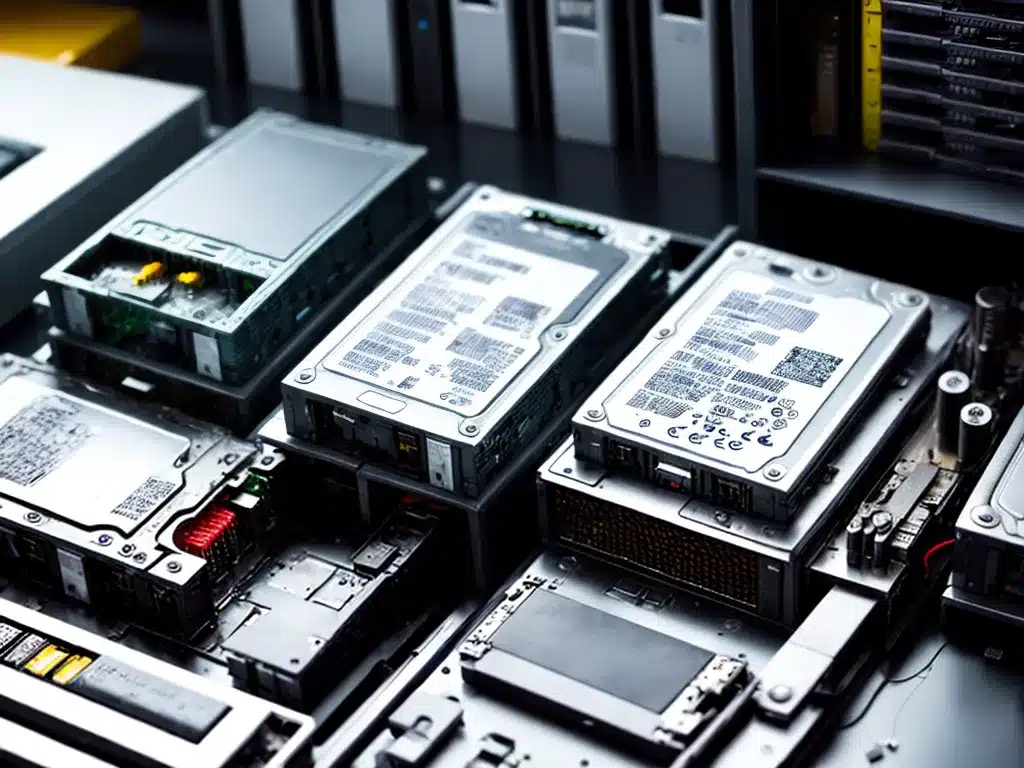
Introduction
Having a NAS gives you extra storage space and allows you to access files from anywhere, but it also introduces new ways for your data to be lost or corrupted. As the sole user of my NAS, I need to be prepared to recover lost data in the event of hardware failure, accidental deletion, malware, or other issues. In this article, I’ll share my tips for recovering lost data from a NAS so you can restore your files if disaster strikes.
Common Causes of Data Loss on a NAS
There are a few main ways data can go missing from a NAS:
Hardware Failure
- Hard drives fail over time. If the drive in your NAS fails, the data could be lost. RAID configurations like RAID 1 can protect against a single drive failure, but if multiple drives die, all data on the NAS could be lost.
Accidental Deletion
- Just like deleting files from your computer, you can accidentally delete files from the NAS interface or from a connected device. These deletions bypass the trash or recycle bin, making data recovery difficult.
Malware/Ransomware
- If connected devices get infected with malware, it can spread to the NAS and encrypt or corrupt your files. Ransomware is particularly dangerous.
Bugs or OS Issues
- Software bugs or crashes in the NAS OS can cause data loss or corruption. Power outages while the NAS is writing data can also lead to corruption.
Theft/Damage
- If the physical NAS is stolen or damaged, you could lose access to all data. Fires, floods, electrical surges, and more can all potentially damage NAS hardware.
Data Recovery Options
If you encounter data loss on your NAS, there are a few different recovery options to try:
Using Snapshots and Version Histories
- Many NAS devices take regular snapshots of files as versions or allow previous versions to be restored from backup. Check if any snapshots exist from before the data loss event.
Cloud/Off-Site Backups
- A cloud backup or off-site physical backup offers the best protection against data loss. Restore the NAS from a backup made prior to data loss.
Direct NAS File System Access
- Bypass the NAS operating system and directly access the NAS drives from a computer. This allows data recovery tools to scan the drives.
Factory Reset the NAS
- As a last resort, reset the NAS to factory settings. This will wipe all data but could restore drives to an accessible state. Resetting deletes all data so only do this if other options fail.
Professional Data Recovery Service
- For significant data loss without backups, a professional recovery service may be able to physically repair drives and recover data. This costs thousands of dollars but can recover data otherwise lost forever.
Best Practices to Allow Recovery
Following these best practices will give you the best chance at recovering lost data:
Use RAID 1 or 10
- RAID 1 mirrors drives so data survives single drive failure. RAID 10 combines mirroring and striping for fault tolerance and performance.
Have On-Site and Off-Site Backups
- On-site backups protect against drive failures and deletion. Off-site backups protect against theft, damage, and ransomware. The 3-2-1 backup rule is ideal: 3 copies, 2 local and 1 remote.
Take Regular Snapshots
- NAS and backup software snapshots save previous file versions. Restore snapshots to roll back to a time before data loss occurred.
Enable Recycle Bin
- Keep a recycle bin active to recover accidentally deleted files.
Install Anti-Virus Software
- Scan connected devices to prevent malware from infecting the NAS. Malware protection software on the NAS provides another layer of defense.
Use UPS for Power Protection
- An uninterruptible power supply keeps the NAS safely powered down during outages to prevent corruption.
Limit External Access
- Only allow trusted devices to access the NAS to prevent malware or accidental deletion from other devices.
Recovering Data After Loss or Corruption
If you already encountered data loss, here are tips for attempting recovery:
Stop Using the NAS Immediately
- Prevent additional data writes so recovery software can read data from the drives. More writes decrease recoverability.
Try Direct Drive Access Recovery
- Attach NAS drives to a computer and run data recovery software to scan the drives and reconstruct files. Most NAS don’t encrypt data.
Repair Filesystem Errors
- If the NAS operating system won’t boot, it may be due to file system errors rather than full drive failure. Repairing errors could restore access without data loss.
Only Factory Reset as a Last Resort
- Resetting the NAS deletes all data. Only do this if you’ve exhausted all other options and have backups. Reset returns the NAS to a usable state.
Determine Failure Points for Professional Recovery
- If DIY recovery fails and you lack backups, determine what failed for a professional recovery service. Was it the OS, enclosure, drives, etc? Details aid recovery.
Final Tips on Avoiding Data Loss
Data recovery is difficult and time consuming, so prevention is key:
-
Have a backup routine – Regularly back up the NAS to the cloud and external drives.
-
Monitor disk health – Keep tabs on hard drive functionality to replace failing drives.
-
Update NAS firmware/OS – Keep firmware updated to fix bugs and security issues.
-
Control access – Only permit trusted devices and users to reduce accidents or malware.
-
Use surge protection – Protect the NAS from electrical spikes that can damage hardware.
Losing data stings, but being prepared with both prevention and recovery measures helps minimize disruption and loss when the inevitable data emergency strikes your NAS. Just be sure to avoid waiting until after disaster strikes to implement a backup plan.












